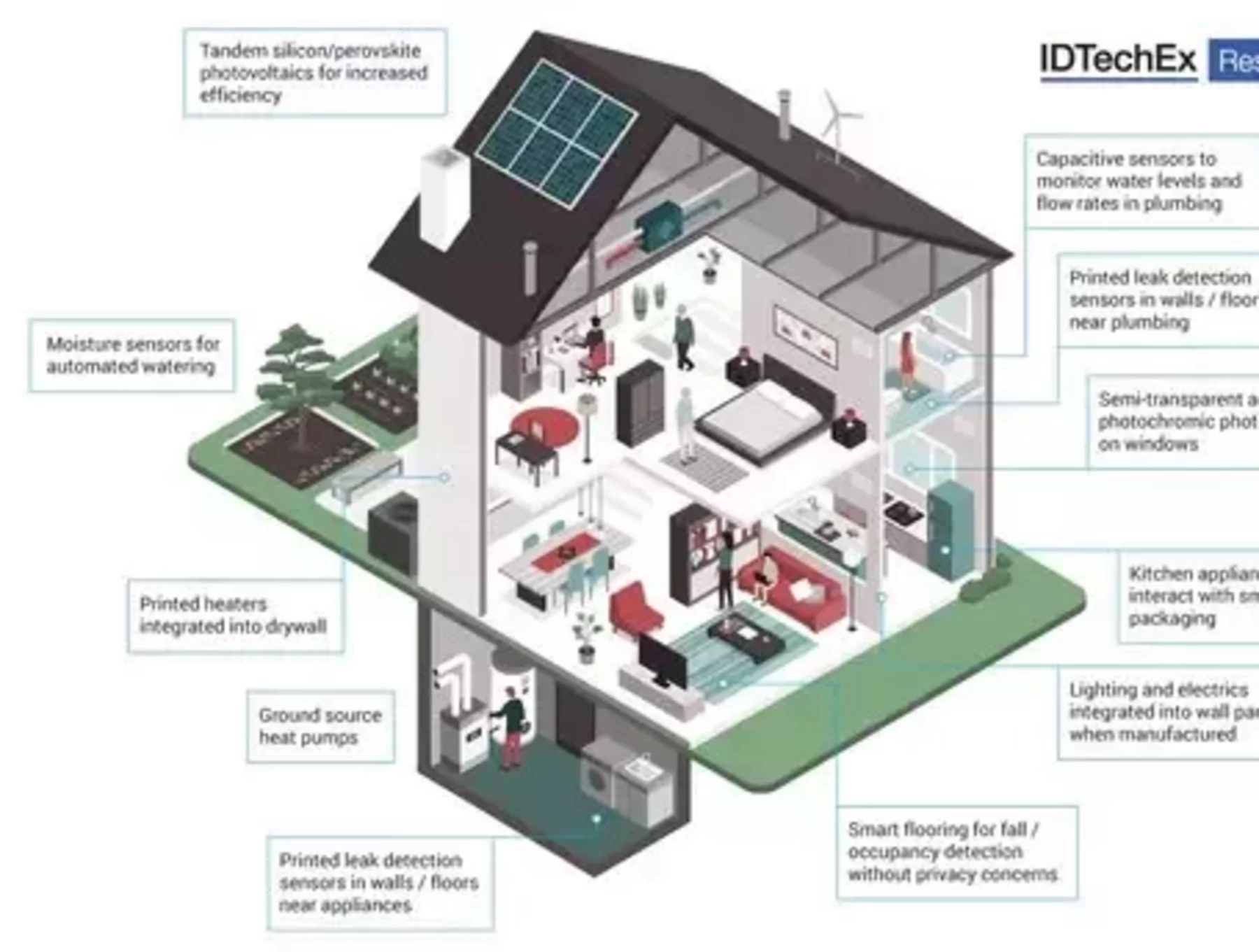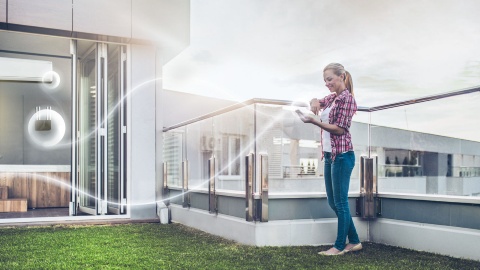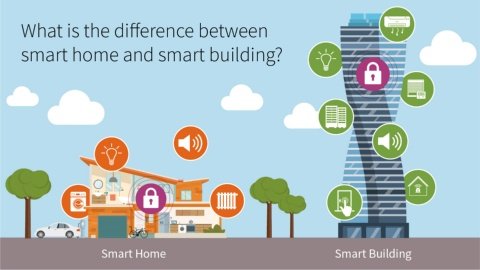Smart home technology streamlines individual household operations, while smart buildings optimize systems across commercial or multi-unit structures. Both prioritize automation and efficiency but differ in scale and complexity.
Smart homes and smart buildings represent the pinnacle of modern living and working spaces, blending technology with daily life to create environments that are not only more responsive but also energy-efficient and secure. At the heart of these innovations lies the goal of enhancing convenience and managing resources effectively.
Smart homes typically focus on personal comfort, offering homeowners the ability to control lighting, temperature, and security systems with a simple voice command or smartphone tap. In contrast, smart buildings extend these capabilities to a larger scale, incorporating advanced systems for heating, ventilation, air conditioning (HVAC), and even elevators or access control, catering to the needs of multiple occupants and stakeholders. Despite their differences, both concepts share a common thread: leveraging technology to make our living and working spaces more intelligent and interconnected. As the world becomes increasingly digital, smart homes and buildings are setting the standard for the future of habitation.

Credit: www.techtarget.com
Smart Home And Smart Building: Unraveling The Concepts
The words “smart home” and “smart building” often create buzz. They bring to mind a future where everything is connected and automated. Both concepts aim to make daily life more efficient and secure. Understanding their key differences is essential. Let’s dive into what sets smart homes and smart buildings apart.
Key Features Of Smart Homes
Smart homes use technology to make life easier. They let homeowners control their living spaces. Here are some key features:
- Automation: Devices perform tasks automatically.
- Remote access: Control your home from anywhere.
- Energy efficiency: Use less power, save more money.
- Security: Keep your home safe with smart alarms.
- Convenience: Manage lights, temperature, and more with ease.
Defining Smart Buildings: More Than Just Tech
Smart buildings go beyond just adding technology. They integrate systems to work together. Here’s what they offer:
| Aspect | Description |
|---|---|
| Scale | Larger than homes, with more complex systems. |
| Integration | Different systems talk to each other for better management. |
| Sustainability | Designed to reduce environmental impact. |
| Occupant comfort | Focus on providing a healthy, productive environment. |
| Operation costs | Smart systems lead to lower running costs. |

Credit: constructiondigital.com
Evolution Of Living Spaces: From Traditional To Intelligent
The Evolution of Living Spaces: From Traditional to Intelligent, marks a significant journey. This evolution has transformed how we live and interact with our environments. Let’s explore this exciting transition.
Historical Shifts In Home And Building Management
The journey from traditional to intelligent living spaces began centuries ago. Initially, homes and buildings were simple structures. Their main goal was to provide shelter. Over time, the need for more comfort and efficiency led to innovations.
- Fireplaces evolved into central heating systems.
- Candles were replaced by electric lighting.
- Manual tasks became automated with early appliances.
This shift was not overnight. It took many years of innovation and change.
Technological Advances Shaping Modern Living
Today, technology is at the heart of our living spaces. Smart homes and buildings use advanced systems. These systems make life easier and more efficient. Let’s look at some key technologies:
- Internet of Things (IoT) connects devices for better control.
- Artificial Intelligence (AI) learns and adapts to our needs.
- Energy-saving technologies reduce costs and protect the environment.
These technologies have a big impact. They change how we control temperature, security, and even how we cook. With a simple voice command or a phone app, we can manage almost everything.
Comparing Smart Homes And Smart Buildings
Smart homes and smart buildings share a common goal. They both aim to enhance efficiency, convenience, and security through technology. Yet, they differ in several key ways. Let’s explore these differences in detail.
Scale And Complexity Differences
Smart homes are typically single-family units. They have fewer devices compared to smart buildings. A smart home might have smart thermostats, lights, and locks. These devices work together for comfort and energy savings.
Smart buildings, on the other hand, are larger. They include office buildings or apartment complexes. They have complex systems for heating, cooling, and security. These systems must work across many floors and spaces. This requires robust networks and more advanced management tools.
User Interaction And Control Variations
In smart homes, users often interact with devices directly. They use smartphones or voice assistants. Users can easily control lights or temperature with simple commands.
In contrast, smart buildings often have centralized control systems. These systems manage multiple devices and sensors. Facility managers use these systems to ensure optimal performance. They monitor energy use and control access to different areas.

Credit: www.infineon.com
The Heart Of Smart: Iot And Connectivity
The Heart of Smart: IoT and Connectivity breathes life into smart environments. It transforms homes and buildings into intelligent hubs. These smart places use devices that communicate with each other. They make living and working easier and more efficient.
Iot Devices At The Core Of Smart Living
IoT devices are key to smart living. They control lights, temperature, security, and more. Smart homes and buildings depend on them. They gather data and adjust settings to our needs.
- Thermostats learn and adapt to our schedules.
- Security cameras keep us safe with real-time alerts.
- Smart lights change brightness and color for different moods.
Connectivity Challenges And Solutions
Smart devices need a strong network to talk to each other. Poor connectivity can cause problems. Good Wi-Fi and Bluetooth can help. Mesh networks make sure all areas are covered.
| Challenge | Solution |
|---|---|
| Wi-Fi dead zones | Install mesh network systems |
| Device interference | Use dual-band routers |
| Security risks | Update devices and passwords |
Smart devices also use Zigbee and Z-Wave. These are low-power networks for small gadgets. They help everything stay connected without using much energy.
Energy Efficiency And Sustainability
Today, we talk about Energy Efficiency and Sustainability. This topic is key in our world. It helps us save our planet. Smart homes and buildings play a big part in this. Let’s dive into how they do it.
Green Technologies In Smart Buildings
Smart buildings use green technologies. These technologies make buildings more eco-friendly. They help in saving energy and reducing waste. Let’s look at some ways they do this:
- Solar panels: They turn sunlight into electricity.
- Smart windows: These windows adjust to light. They help in controlling building temperature.
- Energy-efficient lighting: This type of lighting uses less power.
- Water-saving fixtures: They reduce water waste.
Smart Homes And Energy Saving
Smart homes also focus on saving energy. They use technology to make life easier and greener. Here are some ways they save energy:
- Smart thermostats: They adjust home temperature smartly.
- LED lighting: Uses less energy than regular bulbs.
- Automated systems: They turn off lights and appliances when not needed.
- Energy monitoring: Homeowners can see and reduce their energy use.
Both smart homes and buildings aim for a greener future. By using technology, they save energy. This helps our planet.
Security And Privacy Concerns
Security and privacy concerns are critical in the age of smart technology. As we integrate intelligent systems into our homes and buildings, we must consider how to safeguard our digital footprint. This protection includes data security and physical safety.
Protecting Data In Smart Environments
Smart homes and buildings collect vast amounts of data. This data can include personal information, daily routines, and even financial details. Bold steps are necessary to protect this sensitive information.
- Encryption is a must for all data transfer.
- Regular software updates help shield against hacks.
- Access controls should be user-specific and secure.
Users must be aware of the devices in their smart environments. They should know what data these devices collect.
Physical Safety In The Age Of Automation
Automation brings convenience but also new safety risks. Smart systems control locks, alarms, and even kitchen appliances.
| Feature | Benefit | Risk |
|---|---|---|
| Automated locks | Easy access | Hack vulnerability |
| Smart alarms | Immediate alerts | False triggers |
| Connected appliances | Remote control | Safety hazards |
It’s vital to ensure these systems are reliable. Regular maintenance checks are essential. Users should learn about safety features and how to respond to alerts.
The Future Of Urban Living: Smart Cities
The cities of tomorrow aim to be smarter. This means more efficient, sustainable, and livable urban spaces. Smart homes and smart buildings are the core of these futuristic cities. They bring comfort and convenience to residents. They also support the city’s infrastructure. Let’s explore how this tech shapes urban life.
Integration Of Smart Buildings Into Urban Ecosystems
Smart buildings go beyond saving energy. They interact with the city’s network. This creates a responsive urban ecosystem. Imagine buildings that communicate. They manage resources like water and power together. This leads to a harmonious urban environment.
- Energy sharing between structures
- Smart grids adjust to power demands
- Buildings with sensors that monitor urban health
Smart Homes As Building Blocks Of Smart Cities
Smart homes are the foundation of smart cities. Each home acts like a cell in a larger organism. They connect to create a smarter living space. This network supports citywide tech. It makes everyday life easier and greener.
| Smart Home Features | Benefits to City |
|---|---|
| Automated lighting | Less energy waste |
| Intelligent thermostats | Optimized power use |
| Remote security | Increased safety |
Adoption And Market Trends
The adoption and market trends of smart technology paint a dynamic picture. Smart homes and buildings represent the pinnacle of automated living and working spaces. As technology advances, consumer preferences and market dynamics shift, shaping the future of smart living.
Consumer Attitudes Towards Smart Living
Consumers increasingly embrace smart technology for its convenience, efficiency, and security. Data reflects a growing desire for connected devices that streamline daily tasks. Homeowners prioritize comfort and energy savings, while businesses focus on operational efficiency. This shift in attitudes drives smart tech adoption, with many seeking integrated systems for a seamless experience.
- Comfort: Smart thermostats and lighting adjust to preferences.
- Security: Smart locks and cameras offer peace of mind.
- Efficiency: Smart appliances save time and reduce bills.
Predicting The Market Trajectory For Smart Technologies
Market analysts forecast robust growth for smart homes and buildings. The global smart home market size is set to expand significantly. Smart buildings will follow, with investments in automation systems for commercial spaces rising. The integration of AI and IoT stands as a key driver in this growth, signaling a future where smart living is the norm.
| Year | Global Smart Home Market Value | Smart Building Market Growth |
|---|---|---|
| 2021 | $XX Billion | XX% |
| 2025 | $XX Billion | XX% |
| 2030 | $XX Billion | XX% |
AI and IoT lead the charge in smart tech expansion. These innovations promise greater control and analytics. They boost market confidence, attracting further investment. The trend towards connected living and working spaces seems unstoppable, with tech integration becoming the expected standard.
Challenges And Opportunities In Smart Living
Smart living presents both hurdles and prospects. As technology advances, so do the complexities of integrating it into our homes and buildings. Yet, these challenges pave the way for remarkable opportunities in enhancing our daily lives.
Overcoming Technological Barriers
Smart homes and buildings often face technological barriers. These include compatibility issues and high costs. To overcome these, industry standards must evolve. Innovation should focus on universal solutions. This ensures seamless integration of devices. With such advancements, smart living can become more accessible.
- Improving device communication
- Reducing costs through scalable solutions
- Ensuring user-friendly interfaces
The Potential For Enhanced Living Experiences
Smart living unlocks new possibilities for comfort and efficiency. With the right technology, homes and buildings can adapt to our needs. They can learn our preferences. This leads to personalized experiences.
- Energy management becomes smarter.
- Security systems are more robust.
- Appliances connect for seamless operation.
These enhancements not only make life easier but also more enjoyable. They offer a glimpse into a future where our living spaces serve us better.
Frequently Asked Questions
What Is A Smart Home?
A smart home utilizes advanced automation systems to provide residents with sophisticated monitoring and control over the building’s functions.
How Does A Smart Building Operate?
Smart buildings integrate IoT technologies to manage, monitor, and optimize everything from energy use to space utilization and building maintenance.
Can Smart Homes Save Energy?
Yes, smart homes can significantly reduce energy consumption by automating lighting, heating, and cooling systems for optimal performance.
What Are Smart Buildings’ Main Benefits?
Smart buildings enhance efficiency, security, and comfort while reducing environmental impact and operational costs through intelligent automation and data analytics.
Are Smart Homes Expensive To Install?
Initial costs can be high, but smart homes typically lead to long-term savings through energy efficiency and potentially lower insurance rates.
Conclusion
Deciding between a smart home and a smart building hinges on personal needs and goals. Both offer enhanced efficiency, security, and convenience, tailored to individual or collective settings. Whether upgrading a personal space or an entire building, the choice reflects a commitment to modern living and sustainability.
Embrace the future by selecting the option that aligns with your lifestyle or organizational objectives.

